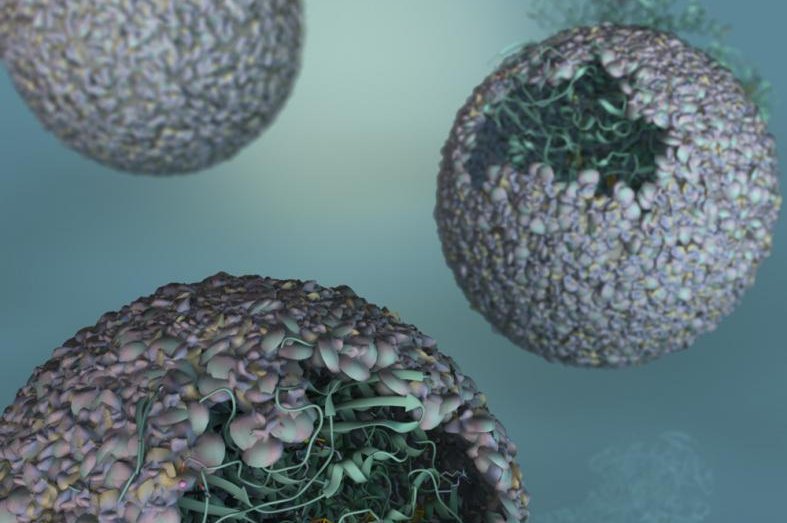Researchers have created an efficient hydrogen-producing biomaterial by hiding a modified enzyme inside a virus. Photo by Trevor Douglas/Indiana University
BLOOMINGTON, Ind., Jan. 5 (UPI) -- By hiding a modified enzyme inside a virus, researchers have created a new biomaterial capable of efficiently catalyzing the production of hydrogen. The so-called "nano-reactor" could lead to more efficient and profitable biofuel production processes.
Inside a capsid, the protective protein shell of a virus, the hydrogen-producing enzyme is 150 times more efficient than an unaltered enzyme.
"Essentially, we've taken a virus's ability to self-assemble myriad genetic building blocks and incorporated a very fragile and sensitive enzyme with the remarkable property of taking in protons and spitting out hydrogen gas," researcher Trevor Douglas, a chemist at Indiana University, explained in a press release. "The end result is a virus-like particle that behaves the same as a highly sophisticated material that catalyses the production of hydrogen."
Researchers first created the modified enzyme by extracting two genes, hyaA and hyaB, from the common bacteria Escherichia coli. These genes encode key subunits of the hydrogenase enzyme. Once inside the capsid, a bacterial virus called bacteriophage P22 is born.
The new biomaterial is easily formed via fermentation at room temperature. The potential scalable technology is simpler and more environmentally friendly than current biofuel production methods.
The hydrogenase enzyme is one of three forms found naturally occurring in the environment. Of the three, it is best suited for incorporation into other biomaterials.
Researchers have previously tried to use the enzyme to produce biofuels, but in its unaltered form it is overly sensitive to heat and outside chemicals, making it ill-suited for large-scale production. The enzyme becomes much more resilient once inside the virus shell.
"No one's ever had a way to create a large enough amount of this hydrogenase despite its incredible potential for biofuel production," Douglas said. "But now we've got a method to stabilize and produce high quantities of the material -- and enormous increases in efficiency."
Even better, the new biomaterial can catalyze two ways. In addition to synthesizing hydrogen, it can also reverse the chemical reaction to recombine hydrogen and oxygen.
"The reaction runs both ways -- it can be used either as a hydrogen production catalyst or as a fuel cell catalyst," Douglas explained.
The biomaterial -- and its numerous potential clean energy applications -- is described in a new scientific paper, published this week in the journal Nature Chemistry.
"Incorporating this material into a solar-powered system is the next step," Douglas said.















